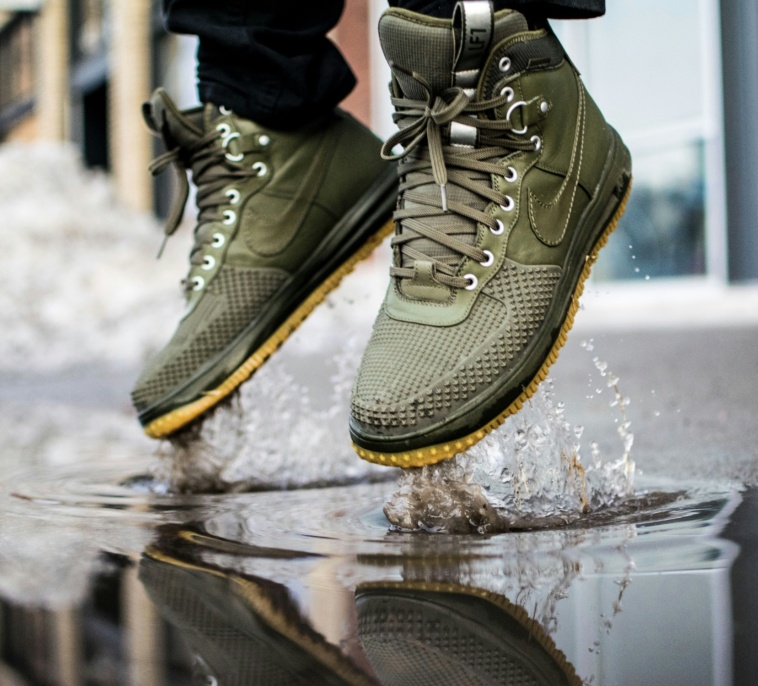Taking care of your men’s boating shoes is essential for their longevity and performance on the water. Whether you’re a seasoned sailor or a casual boater, knowing how to maintain your shoes can make a world of difference. From cleaning and drying to storing and protecting, this article will provide you with valuable tips to keep your men’s boating shoes in top shape so you can navigate the waters with confidence and style. Maintaining your men’s boating shoes is essential to keep them looking their best and ensuring their longevity. Whether you use them for actual boating or just love the nautical aesthetic they provide to your outfit, following these tips will help you take care of your beloved boat shoes.
Cleaning
Brush off dirt and debris
Before starting the cleaning process, it is important to remove any loose dirt and debris from your boat shoes. Use a soft brush or cloth to gently brush away any dirt from the surface, paying special attention to the seams and crevices.
Use a mild soap and water solution
Once the shoes are free from dirt and debris, prepare a solution of mild soap and water. Avoid using strong detergents or harsh chemicals that can damage the material. Dip a soft cloth or brush into the soapy water and gently clean the entire shoe, including the interior and exterior.
Gently scrub the shoes
For stubborn stains or dirt, you may need to gently scrub the affected areas with a soft bristle brush. Be careful not to scrub too hard, as this can damage the material. Instead, use circular motions and apply gentle pressure to remove the stain without causing any harm.
Rinse thoroughly
After cleaning the shoes, rinse them thoroughly with clean water to remove any soap residue. Make sure all the soap is washed away to prevent it from drying on the shoe’s surface, which can leave a residue and make the shoes look dull.
Allow to air dry
Once the cleaning process is complete, it is crucial to allow your boat shoes to air dry completely. Avoid using artificial heat sources, such as hairdryers, as they can shrink or warp the material. Instead, place the shoes in a well-ventilated area and let them dry naturally. Additionally, stuffing them with newspaper while they dry can help maintain their shape.
Storage
Clean the shoes before storage
Before storing your boat shoes, it is important to clean them thoroughly. Even if they appear to be clean, there might be hidden dirt or stains that can worsen over time. Following the cleaning process mentioned earlier will ensure your shoes are in the best possible condition when it’s time to store them.
Ensure they are completely dry
Moisture and humidity can lead to mold and mildew growth, so it is crucial to ensure your boat shoes are completely dry before storing them. Allow them to air dry for a sufficient amount of time to remove any leftover moisture. This will help prevent any unpleasant odors and keep the shoes in good shape.
Stuff with newspaper to maintain shape
To maintain the shape of your boat shoes while in storage, stuff them with newspaper or shoe trees. This will help prevent them from becoming misshapen or developing creases. Fill the shoes loosely with newspaper, focusing on the toe area and any other areas that tend to lose their shape.
Store in a cool, dry place
It is important to choose a suitable location for storing your boat shoes. Opt for a cool, dry place that is well-ventilated, as excessive heat and humidity can damage the shoes. Avoid storing them in damp basements or near direct sources of heat or sunlight, as this can cause material discoloration or warping.
Avoid storing in direct sunlight or extreme temperatures
Direct sunlight can fade the color of your boat shoes over time, so it is important to store them in a location away from direct sunlight. Additionally, extreme temperatures can cause the material to expand or contract, leading to damage. To protect your shoes, choose a storage area that is climate-controlled and away from any extreme temperatures.
Protection
Apply a waterproof spray
To protect your boat shoes from water damage, apply a waterproof spray. Look for a spray specifically designed for the material of your shoes, whether they are made of leather or canvas. Apply the spray evenly to the entire shoe, paying extra attention to the seams and areas that are most likely to come into contact with water.
Reapply the spray regularly
The effectiveness of waterproof sprays diminishes over time, so it is important to reapply the spray regularly. Check the manufacturer’s recommendations for the frequency of application, as it can vary depending on the product. By reapplying the waterproof spray, you ensure that your boat shoes remain protected against water damage.
Use a leather conditioner on leather shoes
If your boat shoes are made of leather, it is important to use a leather conditioner to keep the material soft and supple. Apply the conditioner according to the manufacturer’s instructions, using a soft cloth or brush to work it into the leather. Regular conditioning will help prevent cracks and maintain the longevity of your leather boat shoes.
Apply a fabric protector on canvas shoes
For boat shoes made of canvas, using a fabric protector is essential to protect them against stains and water damage. Spray the fabric protector evenly on the shoe’s surface, ensuring to cover all areas. This will create a barrier that repels liquids and helps prevent stains from setting into the fabric.
Avoid exposing to harsh chemicals
To maintain the integrity of your boat shoes, it is crucial to avoid exposing them to harsh chemicals. Chemicals such as bleach and acetone can cause discoloration or damage to the material. Be cautious when using cleaning products or stepping into environments where chemicals are present, as they can have a negative impact on your shoes.
Regular Maintenance
Inspect for any signs of damage
Regularly inspect your boat shoes for any signs of damage, such as loose stitching, tears, or worn-out soles. Catching these issues early can prevent further damage and prolong the life of your shoes. Thoroughly examine all areas of the shoes, including the upper, sole, and laces.
Repair minor issues promptly
If you notice any minor issues during your inspection, such as loose stitching or minor tears, it is important to address them promptly. Repairing these issues early can prevent them from becoming bigger problems and save you from needing to replace your boat shoes sooner than expected.
Replace worn-out insoles
The insoles of your boat shoes can wear out over time, reducing comfort and support. If you notice that the insoles are no longer providing adequate cushioning or are worn down, it is time to replace them. This simple step can greatly improve the comfort and longevity of your boat shoes.
Replace laces if necessary
Worn or frayed laces not only affect the aesthetic of your boat shoes but also make them less functional. If the laces are showing signs of wear or are no longer able to stay securely tied, it is time to replace them. Choose laces that are suitable for your boat shoes and ensure they are the right length for the desired fit.
Consider getting shoes professionally cleaned
If your boat shoes require deep cleaning or have extensive stains that you cannot remove at home, consider taking them to a professional shoe cleaner. Research local shoe cleaners who specialize in boat shoes and inquire about their cleaning methods. Checking reviews and asking for recommendations will ensure you choose a reputable cleaner who can restore your boat shoes to their former glory. Remember to follow their recommended care instructions after the cleaning process.

Odor Control
Allow shoes to fully dry between uses
To prevent unpleasant odors from developing in your boat shoes, it is important to allow them to fully dry between uses. After wearing them, remove them and let them air out in a well-ventilated area. Avoid wearing them for consecutive days without sufficient drying time.
Use odor-absorbing insoles
If you struggle with foot odor, consider using odor-absorbing insoles in your boat shoes. These insoles are specifically designed to absorb moisture and eliminate odors. They are often made of materials like activated charcoal, which naturally controls odor-causing bacteria.
Sprinkle baking soda inside shoes
Baking soda is a natural odor absorber and can help eliminate unpleasant smells from your boat shoes. Before storing them, sprinkle a small amount of baking soda inside the shoes and let it sit overnight. Shake out the excess baking soda before wearing the shoes again.
Avoid wearing shoes without socks
Wearing boat shoes without socks can contribute to foot odor, as the lack of a barrier causes sweat and moisture to accumulate. To prevent this, always wear boat shoes with socks made of breathable materials that wick away moisture.
Consider using shoe deodorizers
If you still struggle with odor even after taking preventive measures, consider using shoe deodorizers. These come in various forms, such as sprays or sachets, and are designed to eliminate odors and leave your boat shoes smelling fresh. Follow the manufacturer’s instructions for best results.
Avoiding Sun Damage
Limit exposure to direct sunlight
Direct sunlight can cause the color of your boat shoes to fade and the material to deteriorate. To avoid sun damage, minimize the shoes’ exposure to direct sunlight. This includes both when you are wearing them and during storage.
Avoid leaving shoes in hot cars
Leaving your boat shoes in a hot car can lead to warping, shrinking, or material damage. Whenever possible, take your shoes with you when you leave the car or store them in a cooler area of the vehicle.
Use sunscreen on leather shoes
If you are wearing leather boat shoes in the sun, consider applying a leather-specific sunscreen or conditioner. This will help protect the leather from UV damage, preventing it from drying out or becoming discolored.
Store in UV-protected bags or containers
When not in use, store your boat shoes in UV-protected bags or containers. These help shield the shoes from harmful ultraviolet (UV) rays, which can lead to color fading and material deterioration. Look for bags or containers specifically designed for shoe storage that provide UV protection.
Consider using shoe covers
If you anticipate spending prolonged periods in direct sunlight, consider using shoe covers. These protective covers shield your boat shoes from the sun’s rays while still allowing them to breathe. Look for covers made of light and breathable materials to ensure maximum comfort.
Handling Wet Conditions
Allow shoes to air dry naturally
If your boat shoes get wet, it is important to let them air dry naturally. Avoid using artificial heat sources like hairdryers, as they can cause the material to warp or shrink. Instead, remove any excess moisture by blotting with a towel and let the shoes dry in a well-ventilated area.
Avoid using artificial heat sources
As mentioned before, artificial heat sources should be avoided when drying wet boat shoes. Heat can damage the material and alter the shape of the shoes. It is best to be patient and allow them to dry naturally at room temperature.
Stuff with newspaper to absorb moisture
When your boat shoes are wet, stuffing them with newspaper can help absorb moisture and expedite the drying process. The newspaper will absorb the water, preventing it from saturating the material and causing damage. Replace the damp newspaper with fresh sheets until the shoes are completely dry.
Apply a water repellent spray
To enhance your boat shoes’ resistance to water, apply a water repellent spray. Look for a spray specifically designed for the material of your shoes and apply it evenly to the entire shoe. This will help repel water and prevent damage caused by prolonged exposure to moisture.
Check for any signs of water damage
After your boat shoes have dried, it is important to check for any signs of water damage. Inspect the material for discoloration, warping, or any other signs of deterioration. Catching water damage early can prevent further issues and extend the lifespan of your shoes.
Sole Care
Remove any rocks or debris from the sole
The soles of your boat shoes can accumulate rocks, debris, and other materials, which can affect their traction and overall performance. Regularly check and remove any foreign objects that may be stuck to the sole, ensuring a smooth and safe walking experience.
Inspect for wear and tear
Inspect the soles of your boat shoes for any signs of wear and tear. Over time, the soles can become thin or worn down, reducing their grip and support. If you notice significant wear, it may be time to consider replacing the soles to maintain the functionality and safety of your boat shoes.
Replace worn out soles
When the soles of your boat shoes are no longer providing adequate support or traction, it is crucial to replace them. Look for replacement soles that are specifically designed for boat shoes, as they typically offer the necessary grip and durability for boating activities.
Consider adding traction pads
If you often walk on slippery surfaces or require extra traction while boating, consider adding traction pads to the soles of your boat shoes. These adhesive pads can enhance the grip and stability of your shoes, reducing the risk of slips and falls.
Avoid walking on rough or abrasive surfaces
To preserve the integrity of your boat shoe soles, avoid walking on rough or abrasive surfaces whenever possible. Gravel, concrete, or uneven terrain can cause premature wear and tear on the soles, reducing their lifespan. Stick to smooth surfaces or wear alternative shoes for activities that may damage the soles.
Avoiding Stains
Treat stains immediately
When you notice a stain on your boat shoes, it is important to treat it immediately. Ignoring a stain can cause it to set in, making it more difficult to remove. Act quickly to improve the chances of successfully removing the stain.
Blot with a clean cloth
For most stains, blotting with a clean cloth is the first step towards removal. Gently dab at the stain to absorb as much of the substance as possible without spreading it further. Avoid rubbing or scrubbing, as this can push the stain deeper into the material.
Use a stain remover if necessary
If the stain persists after blotting, you may need to use a stain remover. Choose a stain remover that is suitable for the material of your boat shoes, following the instructions provided. Apply the stain remover to a clean cloth and gently blot the stained area, working from the outside inwards.
Avoid using excessive force
When attempting to remove a stain, it is important to avoid using excessive force. Scrubbing or rubbing aggressively can damage the material or alter the shoe’s appearance. Instead, be patient and use gentle techniques, giving the stain remover time to work.
Follow manufacturer’s cleaning instructions
Different boat shoe manufacturers may have specific instructions for cleaning and removing stains. Be sure to consult the manufacturer’s recommendations before attempting to remove stains or applying any cleaning products. Following their instructions will ensure that you clean your boat shoes properly without causing any damage.
Professional Cleaning
Research professional shoe cleaners
If your boat shoes require deep cleaning or have stubborn stains that you cannot remove on your own, researching professional shoe cleaners is a worthwhile option. Look for reputable shoe cleaners in your area who have experience cleaning boat shoes specifically.
Inquire about their cleaning methods
When considering professional shoe cleaners, make sure to inquire about their cleaning methods. Ask about the materials and products they use, ensuring they are suitable for your boat shoes. A knowledgeable shoe cleaner will be able to provide detailed information and put your mind at ease.
Check reviews and ask for recommendations
Before entrusting your boat shoes to a professional cleaner, it is important to check their reviews and ask for recommendations. Reading other customers’ experiences can give you valuable insights into the quality of their service and the results you can expect.
Ensure they specialize in boat shoes
Not all shoe cleaners are experienced with boat shoes, so it is important to choose a cleaner who specializes in this type of footwear. Boat shoes have unique materials and construction, requiring specific care methods. By choosing a specialized cleaner, you can have peace of mind knowing that your boat shoes are in good hands.
Follow their recommended care instructions
After your boat shoes have been professionally cleaned, make sure to follow the shoe cleaner’s recommended care instructions. They may have specific recommendations for maintenance, treatments, or products that can help maintain the cleanliness and condition of your freshly cleaned boat shoes. By following their suggestions, you can prolong the results of the professional cleaning and keep your boat shoes looking their best.
By following these comprehensive tips for maintaining men’s boating shoes, you can ensure that your beloved footwear stays in top-notch condition. Regular cleaning, proper storage, and protection against the elements are key to maintaining the longevity and aesthetic appeal of your boat shoes. Whether you’re on an actual boat or just rocking the nautical style, taking care of your boat shoes will keep you looking stylish and ready for any marine adventure.







